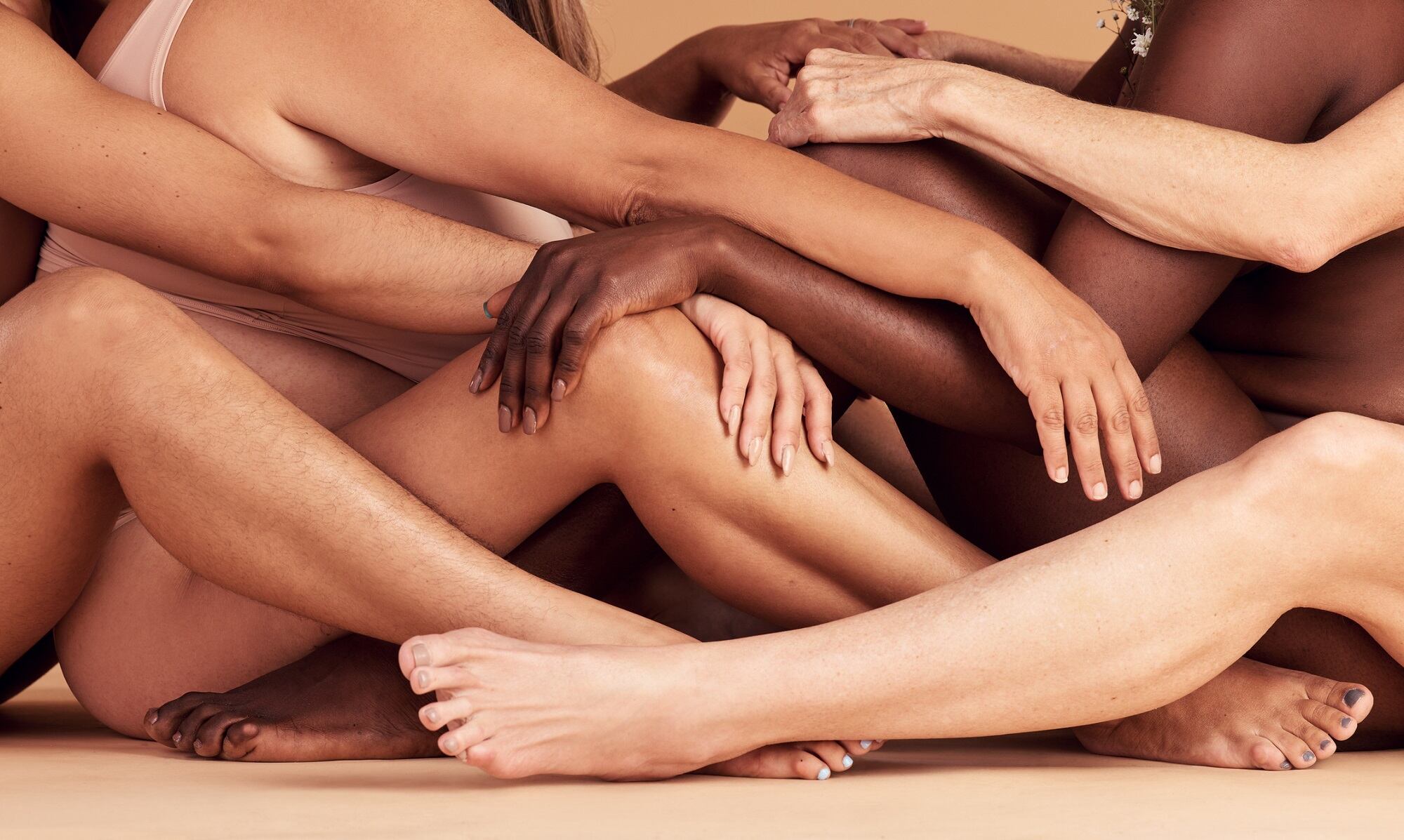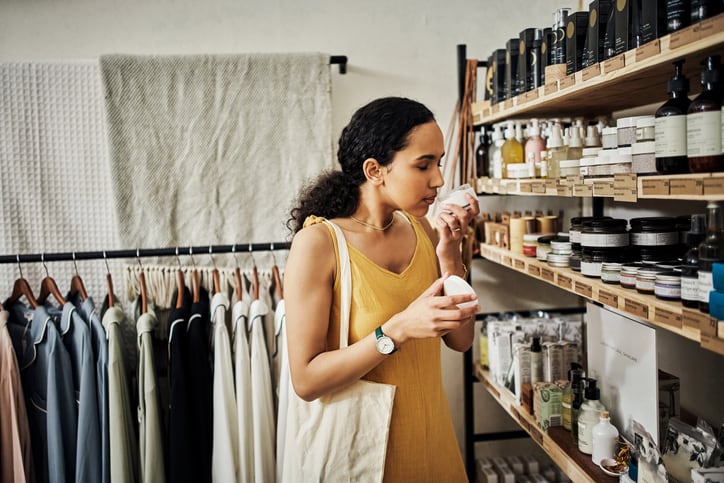Inclusivity and diversity in cosmetics and personal care continue to be driving trends in these industry spaces, with Mintel recently reporting that “50% of consumers shop from brands with diversity or inclusivity, and 86% of beauty product users say they would like to see realistic signs of aging depicted in beauty advertisements.”
Brands like Fenty Beauty have made a significant impact in the cosmetics space with its wide range of inclusive and diverse foundation shades, while hair care brands like Mielle Organics have become exponentially more popular with consumers seeking more effective options for textured hair care needs.
To learn more about the impact inclusivity and diversity trends have played in cosmetics and personal care, the consumer demand for diverse and inclusive products and services in these industries, and some companies and brands that have successfully leveraged these trends in product collections and marketing campaigns, we spoke with Jennifer White Boehm, Director of Personal Care and Household and Wellness at Mintel for her insights.
Impactful trends in inclusivity and diversity
Inclusivity and diversity can be very broad and can be represented in cosmetics and personal beauty care product formulation and collection launches in different ways. One impactful trend on the rise in these industries is the inclusion of different beauty life stages, shared Boehm.
From the growing popularity of tween audience focused brands to the elimination of ageism is marketing, brands like The Body Shop are following in the footsteps of bigger brands to eliminate anti-aging from its marketing and consumer engagement strategies to encourage inclusivity in its brand messaging. Further, the rise of menopausal care as a personal beauty product category is also indicative of more diverse product offerings for a wider and more inclusive audience base.
Category inclusion is another impactful trend on the rise in this space, which in recent months and years has “evolved beyond cosmetic shade ranges, for example, foundation matching, to include products that support multicultural adults across BPC categories like sun care, such as clear formulas and no white cast,” shared Boehm. This trend also includes shaving and hair care products with the launch of more diverse product ranges specifically designed to support the needs of those with textured hair types.
A third impactful trend in inclusivity and diversity is addressing skin concerns in “a widely marketed way to appeal to a diverse set of consumers,” Boehm said. Historically, skin type is prominent in marketing, she explained, with campaigns and products focused on addressing issues like oily, dry, or combination complexions. Recently, however, “taboo concerns and topics like KP (keratosis pilaris), ingrown hairs, and intimate care are gaining traction” to be more inclusive of a wider range of skin care issues.
A fourth impactful trend rising in popularity in these areas is price accessibility. Brands like e.l.f. Beauty have seen exponential growth and are built on a platform of “giving consumers access to skin solutions at affordable prices,” she shared, which has recently “been easier with the macro trend of democratization of claims across pricing tiers in BPC.”
Understanding and addressing more inclusive and diverse consumer needs
Measurement and tracking of the consumer demand for inclusive and diverse beauty care product offerings is determined through various channels and tools to gauge the recent rise in popularity and growth in these spaces. Said Boehm, “it's mainly measured by the brands that are paying attention to the space - either they're running their own internal research or using vendors like Mintel to justify the costs to reformulate or change packaging to reach a more diverse audience.”
Additionally, the rise in consumer need for inclusive and diverse product offerings is also determined through “paying attention to cultural trends”, she said. Regarding US consumers specifically, this means as shoppers “demand more diverse faces and views in basically any industry they interact with, brands are picking up on the fact that being inclusive means good business”.
Upon receiving these inputs, manufacturers and suppliers to the cosmetic and personal beauty care product industries can capitalize on this information in different ways to better understand and serve consumer needs. One way in which brands can leverage this information into better product formulations is to “understand the nuances/differences in skin and hair needs by unique demographics like age, gender, and ethnicity,” which can be accomplished by “connecting ingredients that support said skin and hair needs as consumers turn towards recognizable ingredients to combat issues,” she said.
Another method for utilizing consumer data trends to better meet consumer demand is through “transparent messaging across product lifecycles of what makes up the product and packaging, and why as well as proven efficacy or brands risk pandering to their audience(s),” she added.
Considering that “56% of US consumers agree that ‘there needs to be more beauty products for people with mobility challenges’, and 34% of US consumers ‘struggle to find beauty products that meet [their] needs’,” it is exceptionally advantageous for brands in these spaces to at least consider the growing consumer desire for more inclusive and diverse product offerings in their plans for new product development and launch campaigns.
Challenges and successes in these spaces
While the consumer desire for more inclusive and diverse cosmetic and personal beauty care product options has been well established, there are still some pressing challenges and concerns that need to be addressed to make these product collections more accessible. For example, the “rising costs that accompany new formulations, and the ability to carry extended SKU ranges” can be prohibitive to some brands, said Boehm.
“Even with the demand for personalized ranges,” she explained, “quantities may not compete with traditional all-inclusive formulations putting pressure on margins and costs.”
Despite these challenges, some brands currently stand out as having done a particularly successful job at incorporating the principles of inclusivity and diversity into their product formulations or marketing efforts. Dove is one noteworthy example, she shared, with its “long-term commitment to dads, particularly dads of color through marketing and messaging over the last few years.”
Degree is another example of successful product development and marketing based on inclusivity and diversity, she added. In addition to maintaining “literal product concepts that support consumers with physical limitations, they continue this branding through their commitment to ‘movement’ for all global” consumers, she said.
A third example of successful product formulation and branding with a focus on inclusive and diverse options is skin care brand fur, whose “commitment to previously taboo skin concerns that many brands weren't particularly talking about” is particularly noteworthy. The brand offers product options like a KP Body Scrub and Ingrown Eliminator Serum, which neatly fit into the rising impactful trends of products that address more ‘taboo’ skin concerns.
What’s next in inclusivity and diversity
Data trends clearly demonstrate that inclusivity and diversity are on the rise and here to stay in the US cosmetic and personal care product spaces, and brands like Dove are already making great strides in product formulation and branding strategies to drive consumer consumption in these areas. However, there is still a lot of space for other brands to make impactful decisions regarding these trends.
“Ultimately, we all realize that investment in diverse and inclusive products is expensive and could take a significant amount of time,” shared Boehm. However, “these are not short-terms decisions that brands need to be making,” but rather, long-term investments in product formulation and marketing strategies. Moving forward, she concluded, and “looking at the next generation of shoppers, they're going to want to see these changes in any major category, and especially in beauty and personal care.”




